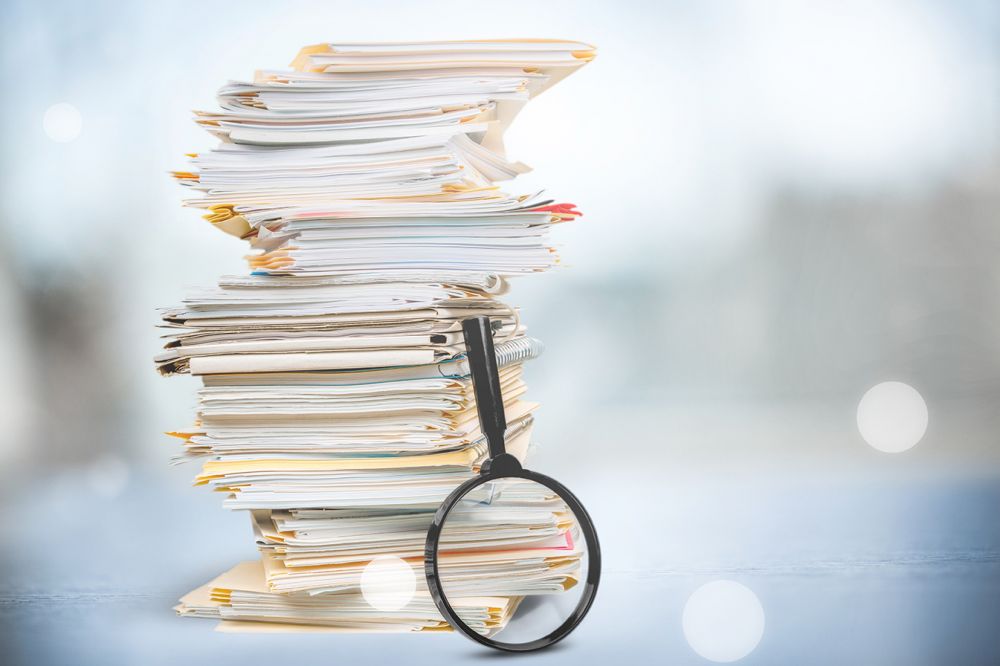ORGANIZE STORAGE
The sheer volume of documents created in the course of business operations is forcing the companies to put in place comprehensive storage solutions. Most businesses only decide to address the issue when they realize how much time is spent searching for documents, or when they find themselves unable to locate the documents they need.
We are here to support and help you prepare the needed groundwork to regulate the archiving processes, draw up an inventory of materials kept, and set up physical storage. In agreement with you, we can also take over the removal and destruction of materials past their retention end date. Reduce the time spent searching for documents kept.
SETTING UP ON-PREMISE STORAGE
INVENTORY OF DOCUMENTS
- Drawing up an inventory of documents
- Setting up uniform records
INTERNAL ACTS
- Drawing up the Rules on Storage
- Drawing up the Classification Scheme
ARCHIVES OF SLOVENIA
- Preparing a master list of material
- Selecting and preparing archive material to be transferred to the Archives of the RS
REGULATED STORAGE
REGULATED STORAGE REDUCES BUSINESS RISKS
Comprehensive physical storage of documents guarantees control over the documents kept, their transparency and accessibility, and records of any retrievals.
Drawing up an inventory of documents
Drawing up an inventory of documents or archival units used for storing documents (boxes, arch lever files, folders, etc.) also includes inventory indexing (metadata such as title of material, type of material, date of creation, retention period, etc.) and barcoding archival units with unique identifiers containing the selected metadata.
Setting up uniform records
Several archivists work simultaneously to carry out an itemized inventory of the transferred documents which is then combined into a uniform, centralized, records system. The procedure covers the verification of data, completion of the records with any missing data and correction of any errors detected during the inventory (e.g. if metadata cannot be extracted from the archival unit because there is no indication of the contents on the lever arch file, our team will check the contents and define the descriptive data.
Drawing up internal acts
If your organization has not yet adopted its Rules on Storage and the Classification Schedule, we can prepare the templates of these documents and send them to you for approval. If you have already adopted the Rules and Classification Schedule, we will review both documents for accuracy and currency and prepare amendments, if needed.
Drawing up a list of materials for the Archives of the Republic of Slovenia
When the Rules on Storage and the Classification Schedule is adopted, we have to prepare a list of materials for the Archives of the Republic of Slovenia. According to the sectoral legislation, public-law entities shall enable the competent archive to view the materials to be transferred and provide the institution with the data needed to keep the records of the archival materials. In response to the call of the competent archival institution, the company will submit the list of archival materials along with a request for the issue of instructions for its selection.
Selecting and preparing archival material to be transferred to the Archives of the Republic of Slovenia
Upon receiving the list of materials kept, the competent archive will specify the archival material to be transferred. On the basis of the instructions to select the archival material from the documentary material, we will first conduct the physical withdrawal of materials from your storage.
The next step is to prepare the material to be fit for transfer to the Archives of the Republic of Slovenia. This includes detailed inventory, preparation of the material (removal of clips, plastic binders and pockets, adhesive tape, etc.), packing into boxes, as well as delivery and transfer to the competent archive. A Handing-over and Acceptance Certificate is issued upon the completion of the transfer.
Regulated and legally compliant storage
The result of the consultations is regulated and legally compliant storage of documents in physical (paper) and other formats that only contains currently valid documentation.
BENEFITS OF REGULATED STORAGE
Efficiency
Regulated storage increases
the accessibility of the material kept and
reduces the search time to just a few minutes.
Security
We facilitate more effective mitigation
of business risks arising from
inappropriate storage of paper documentation.
Reliability
Efficient and approachable,
our competent and experienced team
will be with you every step of the way.
SUCCESS STORIES
When we started, certain documents were nearly impossible to locate, while today the document we need is available in an instant. We outsourced the archiving to Mikrocop, which proved to be the right decision. We were very satisfied with the implemented storage system solution and we continue to work with them. Their response is always quick and professional, and their services are high quality.
– Alenka Teraž, KZ Agraria Koper
FAQ
What should a company know about document archiving?
What is the role of standards governing long-term preservation, and which are these?
Appropriate document storage must comply with all the requirements defined by the Protection of Documents and Archives and Archival Institution Act. These standards are binding upon any company or organization that intends to establishing safe, permanent and compliant document storage which will serve its purpose and ensure users document transparency, accessibility and control.
We must ensure appropriate space and equipment in the archive room, as well as adequate protection of archive material and its use.
How do we ensure the authenticity of paper documents?
If the document is not authentic, it loses its legal and evidence value.
Document authenticity can only be maintained if:
- the archive is properly recorded and organized,
- quick access to documents is ensured when needed,
- access to the archive is restricted to authorized persons only,
- suitable conditions of physical document storage are observed,
- documents are disposed of and selected in a timely fashion, and
- proper protection is ensured.
What is the difference between archival and documentary material?
The Slovenian legislation on archiving clearly distinguishes between documents and archives. The Protection of Documents and Archives and Archival Institution Act defines documents as a collective term for all types and forms of records created or received in the course of operations of legal entities and individuals. This definition of documents, more commonly known as (business) documentation, contains both physical (paper) and electronic documents.
Documents with lasting importance for history, other sciences and culture or lasting importance for the legal interests of legal and natural persons are called archives, and are considered a cultural monument. Archives are produced by entities under public law and private law entities. Private law entities and natural persons must provide for the preservation of private archives but they can transfer them to the competent public archival institutions. The competent archival institution defines the selection of archives of entities under public law in written professional instructions. Until professional instructions are issued, all documents must be treated as archives, which means that they cannot be destroyed, must be permanently and professionally stored in adequate premises and equipment, under appropriate environmental conditions, protected against fire, water, theft, etc.




